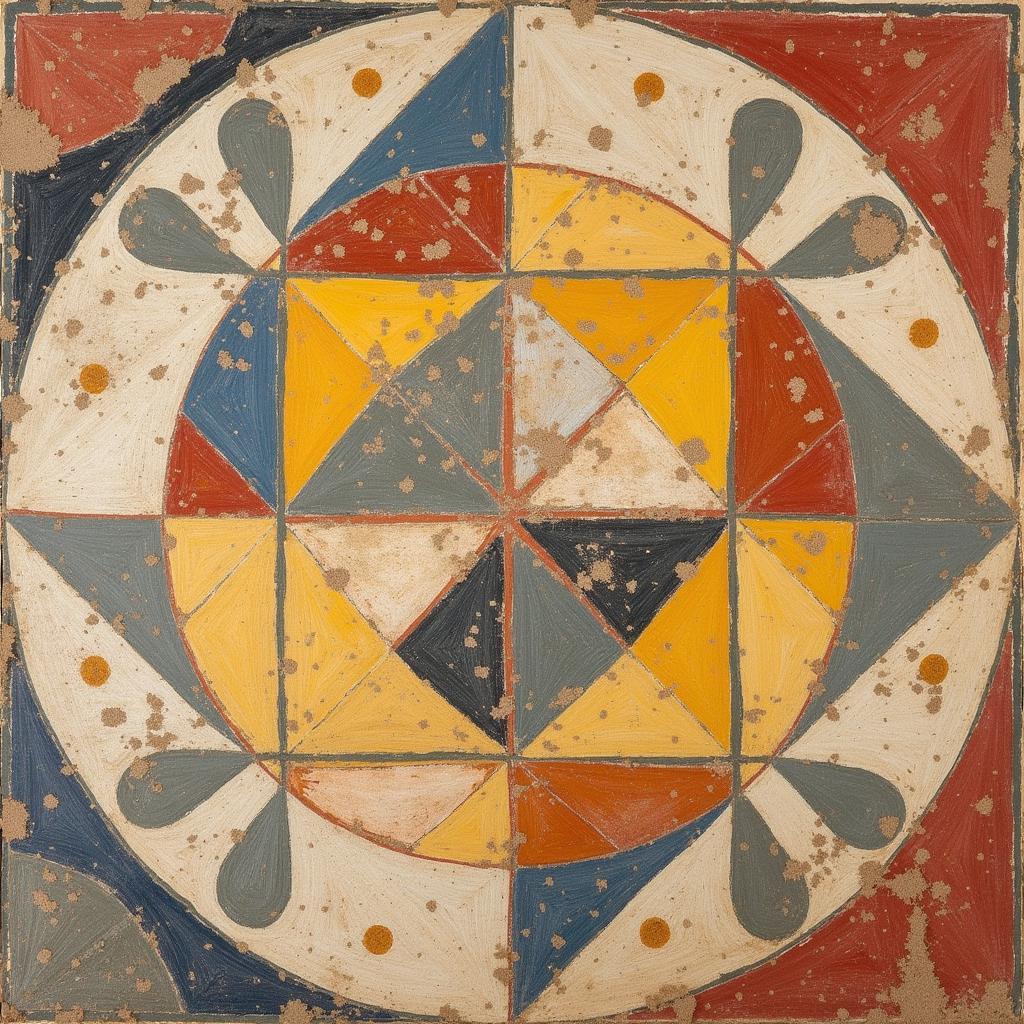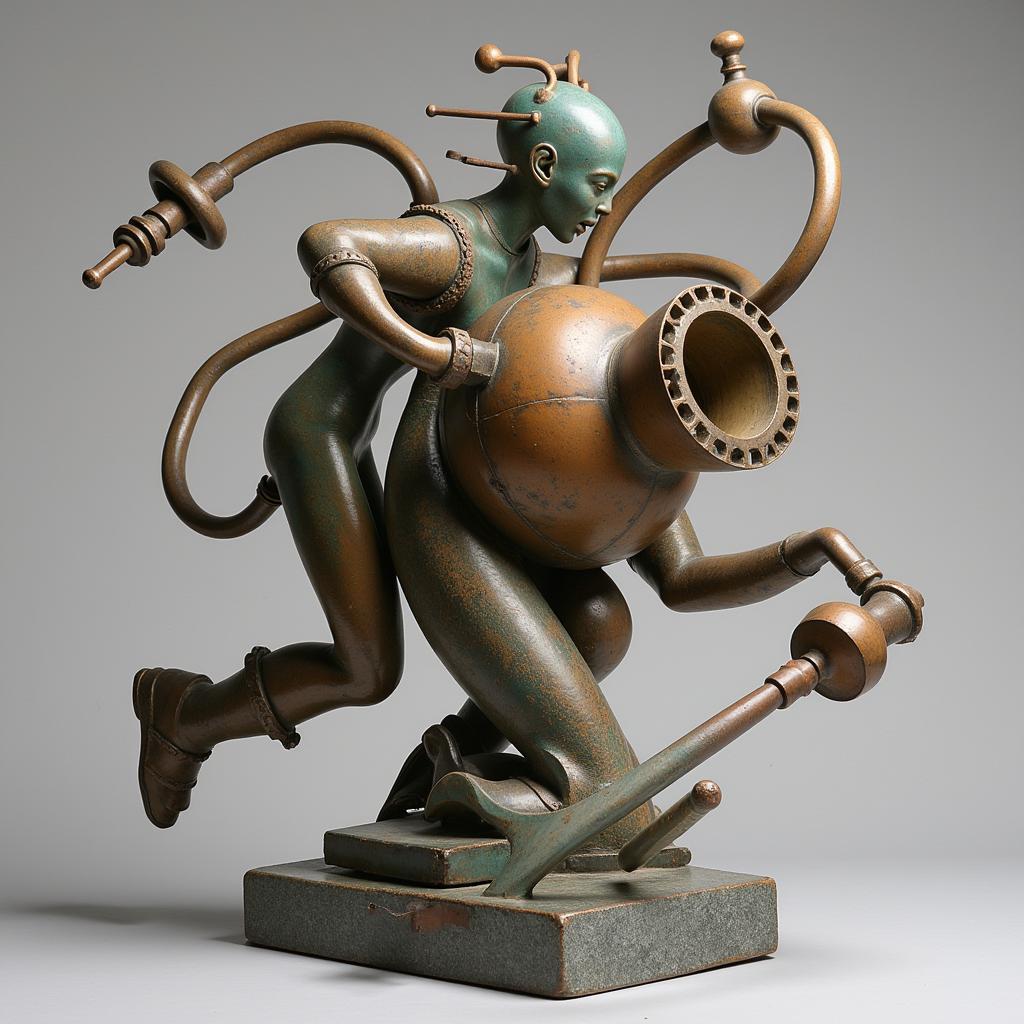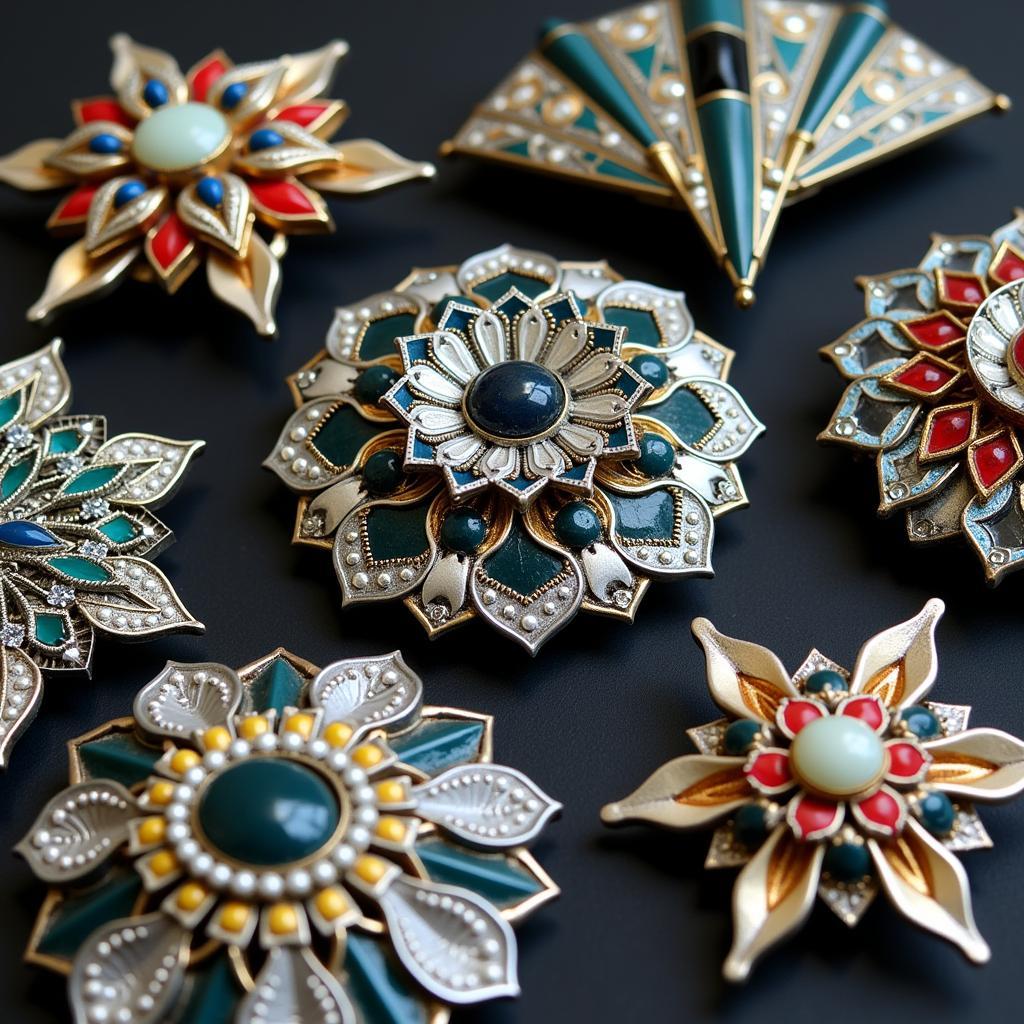Unveiling the Mystery: What is Abstract Italian Art?
Abstract Italian Art represents a captivating chapter in the global narrative of abstract art. Emerging in the early 20th century, it challenged traditional artistic conventions, embracing instead the evocative power of form, color, and texture. This departure from representational art marked a profound shift, inviting viewers to experience art through a new lens – one focused on emotion, concept, and individual interpretation.
 Geometric Shapes in Traditional Italian Art
Geometric Shapes in Traditional Italian Art
The Roots of Abstraction in Italy: A Legacy of Innovation
While the term “abstract art” often conjures images of American Abstract Expressionism, Italy played a pivotal role in shaping this revolutionary movement. Italian artists, fueled by the rapid societal changes of the early 20th century, sought new visual languages to express the complexities of the modern world. This led to the birth of Futurism, a movement that glorified speed, technology, and the dynamism of urban life. Artists like Giacomo Balla and Umberto Boccioni used abstract forms and bold colors to capture the essence of motion and progress.
 Flow and Movement in Italian Modern Art
Flow and Movement in Italian Modern Art
Beyond Futurism: Exploring Diverse Abstract Styles
Italian abstract art was not a monolithic movement. Following Futurism, artists continued to explore abstraction through diverse lenses. Spatialism, led by Lucio Fontana, sought to break the traditional boundaries of painting by incorporating spatial elements and unconventional materials. Artists like Alberto Burri embraced Arte Povera, using humble materials like burlap and scrap metal to create powerful statements about postwar society. These diverse approaches demonstrate the breadth and innovation that characterized Italian abstract art.
Abstract Italian Art: A Dialogue Between Past and Present
One of the most fascinating aspects of abstract Italian art is its continuous dialogue with the country’s rich artistic heritage. Even while embracing abstraction, Italian artists often drew inspiration from classical art, architecture, and the surrounding landscape. The interplay of light and shadow in a Renaissance painting, the geometric patterns of Roman mosaics, or the vibrant colors of the Mediterranean coast found echoes in the works of abstract artists. This fusion of past and present created a unique visual language that resonated deeply with Italian identity.
Experiencing Abstract Italian Art Today
Today, abstract Italian art continues to captivate and inspire. Museums across Italy, from Rome’s MAXXI to Milan’s Museo del Novecento, house impressive collections of this vibrant art form. Contemporary Italian artists continue to push the boundaries of abstraction, exploring new materials, techniques, and conceptual frameworks. Whether you’re drawn to the dynamism of Futurism, the spatial explorations of Spatialism, or the raw materiality of Arte Povera, abstract Italian art offers a rich and rewarding journey of discovery.
FAQs About Abstract Italian Art
What were the main influences on abstract Italian art?
Abstract Italian art was influenced by a confluence of factors, including the rise of industrialization, technological advancements, and the social and political upheavals of the early 20th century. Artists also drew inspiration from earlier art movements like Futurism, Spatialism, and Arte Povera, each contributing unique perspectives and techniques to the evolving landscape of abstract art in Italy.
Where can I see examples of abstract Italian art?
Italy boasts a wealth of museums and galleries dedicated to showcasing the evolution and diversity of Italian art. Notable institutions include the MAXXI (National Museum of XXI Century Arts) in Rome, the Peggy Guggenheim Collection in Venice, and the Museo del Novecento in Milan. These venues provide a glimpse into the groundbreaking works of renowned Italian abstract artists and offer a deeper understanding of their contribution to the broader art historical narrative.
How did Italian abstract art differ from abstract art movements in other countries?
While sharing some commonalities with international abstract movements, Italian abstract art often distinguished itself through its unique relationship with Italy’s rich cultural heritage. Artists frequently drew inspiration from classical art, architecture, and the Italian landscape, infusing their abstract works with a distinct visual language rooted in Italian identity.
Explore Further: Delve Deeper into Italian Art and Design
- Art Deco Stamps: Discover the geometric elegance of art deco, a design movement that found resonance in various art forms, including Italian art.
- Venice Wall Art: Explore captivating wall art inspired by the enchanting city of Venice, known for its artistic heritage and breathtaking canals.
- Sicily Wall Art: Immerse yourself in the vibrant colors and cultural motifs of Sicily through stunning wall art, reflecting the island’s unique artistic traditions.
Contact Us: Embark on Your Artistic Journey Today!
Ready to explore the captivating world of abstract Italian art further? Contact us today for personalized guidance and explore our curated collections of Italian-inspired art and design.
Phone: 02462573573
Email: danteum@gmail.com
Visit us at: Savico Megamall, 7-9 Đ. Nguyễn Văn Linh, Gia Thụy, Long Biên, Hà Nội 10000, Việt Nam.
Our dedicated team is available 24/7 to assist you in discovering the perfect piece to enhance your space and ignite your passion for art!


